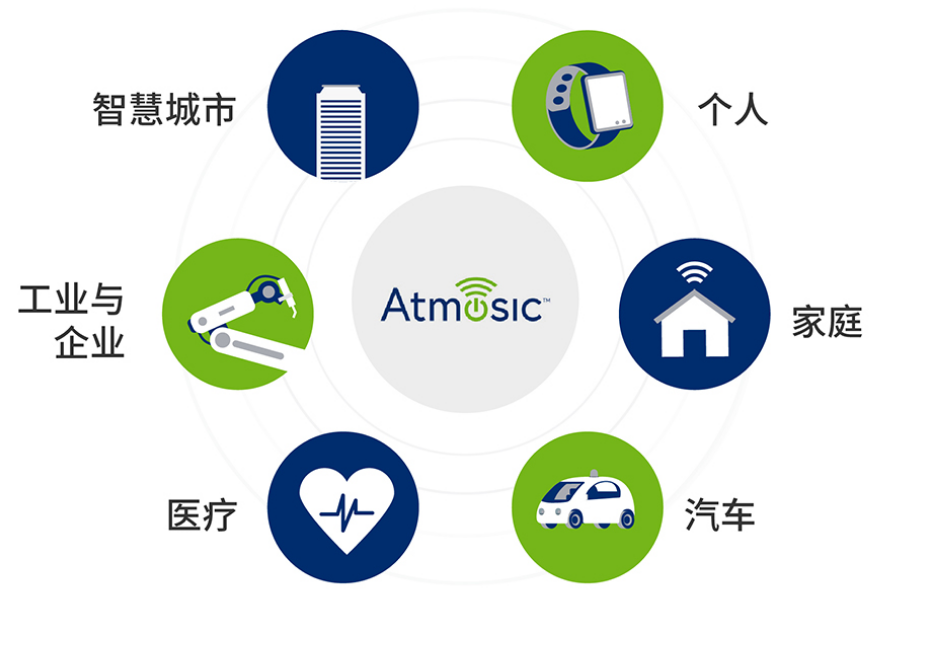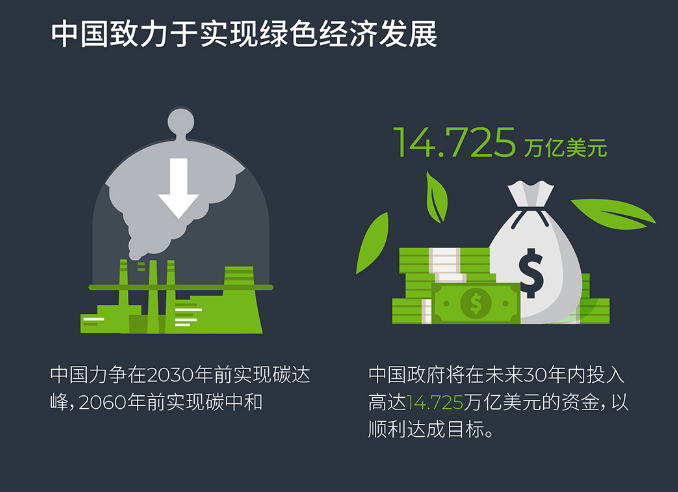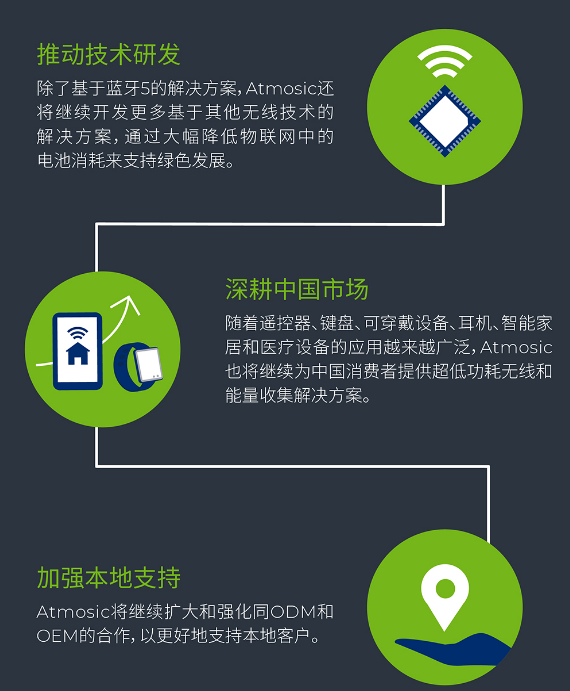September 1, 2021—— Beijing, China
Today, Atmosic, an innovator of ultra-low power wireless technology for the Internet of Things (IoT), celebrated its fifth anniversary. Since its establishment in 2016, Atmosic has continuously created breakthrough solutions and achieved steady growth in global business with three disruptive technologies: ultra-low power RF, RF wake-up, and controlled energy harvesting. Relying on the achievements made in the past five years, Atmosic is fully capable of meeting the market's urgent demand for ultra-low power solutions and helping to reduce the dependence of IoT devices on batteries. Atmosic is ready to empower the green economy with "cores".

Atmosic is headquartered in Silicon Valley and was founded by four wireless engineering experts, including current CEO David Su. With the vision of "achieving IoT applications with permanent battery life or no batteries required", since its inception, Atmosic has been committed to providing the market with innovative technologies and solutions to help reduce the adverse impact of batteries on the environment. After five years of steady accumulation, Atmosic has fully demonstrated its outstanding technological innovation capabilities, dedicated customer service capabilities and broad international vision, laying a solid foundation for future development.

At present, China is continuously promoting the green economic development strategy and striving to achieve the important goal of "carbon neutrality" by the middle of this century. Atmosic is integrating into China's high-quality development. Looking to the future, Atmosic hopes to uphold the strategy of "taking root in China and serving China" and reduce the dependence of IoT devices on batteries by providing innovative technologies and solutions, thus supporting the development of China's green economy.

Atmosic will continue to bring more ultra-low power wireless technology solutions to Chinese consumers, integrating innovative energy harvesting technologies to obtain the energy needed to drive devices from various sources such as daily lighting, solar energy, thermal energy and radio frequency. These solutions will also be used in more and more IoT devices, such as remote controls, keyboards, wearable devices, headphones, beacons, sensors, home automation and medical devices, etc. In addition, in addition to Bluetooth 5 technology, Atmosic will continue to develop more products and solutions based on other wireless technologies for the Chinese market. At the same time, Atmosic will continue to expand its ODM and OEM partner lineup and the entire ecosystem in China to better support local customers.
David Su, CEO of Atmosic Technologies, said: "China is shifting towards a greener and more sustainable growth model. In this process, technology will be a key factor in leading development. A large number of IoT devices rely on batteries to operate, and discarded batteries will harm the environment. Atmosic is committed to 'enabling battery-free IoT devices' and will continue to provide better support for the development of China's green economy through technological innovation and services."
About Atmosic Technologies
Atmosic™ Technologies is an innovative fabless semiconductor company that designs ultra-low power wireless technology solutions, including ambient energy harvesting solutions, designed to greatly reduce and eliminate the device's dependence on batteries, thereby enabling the development of a perpetual battery life and battery-free Internet of Things. As the Internet of Things becomes more and more widely used in individuals, homes, cars, healthcare, industry, enterprises, and smart cities, Atmosic's products can significantly reduce the cost and workload of IoT operations for designers, manufacturers, and end users responsible for deployment in the IoT device ecosystem. In addition to these obvious business advantages, Atmosic is also committed to reducing the impact of the Internet of Things on the overall global ecological environment by reducing battery consumption.
Previous article:Intel releases new Xeon W-3300 processor
Next article:ST launches ST4SIM M2M GSMA-compliant eSIM chip for mass market
- e-Network Community and NXP launch Smart Space Building Automation Challenge
- The Internet of Things helps electric vehicle charging facilities move into the future
- Nordic Semiconductor Launches nRF54L15, nRF54L10 and nRF54L05 Next Generation Wireless SoCs
- Face detection based on camera capture video in OPENCV - Mir NXP i.MX93 development board
- The UK tests drones equipped with nervous systems: no need to frequently land for inspection
- The power of ultra-wideband: reshaping the automotive, mobile and industrial IoT experience
- STMicroelectronics launches highly adaptable and easy-to-connect dual-radio IoT module for metering and asset tracking applications
- This year, the number of IoT connections in my country is expected to exceed 3 billion
- Infineon Technologies SECORA™ Pay Bio Enhances Convenience and Trust in Contactless Biometric Payments
- Innolux's intelligent steer-by-wire solution makes cars smarter and safer
- 8051 MCU - Parity Check
- How to efficiently balance the sensitivity of tactile sensing interfaces
- What should I do if the servo motor shakes? What causes the servo motor to shake quickly?
- 【Brushless Motor】Analysis of three-phase BLDC motor and sharing of two popular development boards
- Midea Industrial Technology's subsidiaries Clou Electronics and Hekang New Energy jointly appeared at the Munich Battery Energy Storage Exhibition and Solar Energy Exhibition
- Guoxin Sichen | Application of ferroelectric memory PB85RS2MC in power battery management, with a capacity of 2M
- Analysis of common faults of frequency converter
- In a head-on competition with Qualcomm, what kind of cockpit products has Intel come up with?
- Dalian Rongke's all-vanadium liquid flow battery energy storage equipment industrialization project has entered the sprint stage before production
- Allegro MicroSystems Introduces Advanced Magnetic and Inductive Position Sensing Solutions at Electronica 2024
- Car key in the left hand, liveness detection radar in the right hand, UWB is imperative for cars!
- After a decade of rapid development, domestic CIS has entered the market
- Aegis Dagger Battery + Thor EM-i Super Hybrid, Geely New Energy has thrown out two "king bombs"
- A brief discussion on functional safety - fault, error, and failure
- In the smart car 2.0 cycle, these core industry chains are facing major opportunities!
- The United States and Japan are developing new batteries. CATL faces challenges? How should China's new energy battery industry respond?
- Murata launches high-precision 6-axis inertial sensor for automobiles
- Ford patents pre-charge alarm to help save costs and respond to emergencies
- New real-time microcontroller system from Texas Instruments enables smarter processing in automotive and industrial applications
- 【Distributed temperature and humidity acquisition system】+MFC software
- Use of EEPROM inside STC microcontroller - Recording power-on times
- Regarding the number of bits of the microcontroller, the number of bits of the ADC, and the number of bits of the PWM, ADC and PWM are both indicators that reflect the resolution...
- Please teach me an op amp circuit - RMS to DC circuit
- 【Silicon Labs Development Kit Review】+ PWM Example Test
- Porter-3: Will this topology work?
- Problem with the abs function
- Xunwei i.MX6ULL development board-Transplant OpenCv2.4.9-QT program compilation
- [Me and Arteli] DIY an AT32 board, full of favorability
- Microcontroller selection

 Build the Internet of Things with Arduino
Build the Internet of Things with Arduino USB Development Encyclopedia 4th Edition
USB Development Encyclopedia 4th Edition
















 京公网安备 11010802033920号
京公网安备 11010802033920号